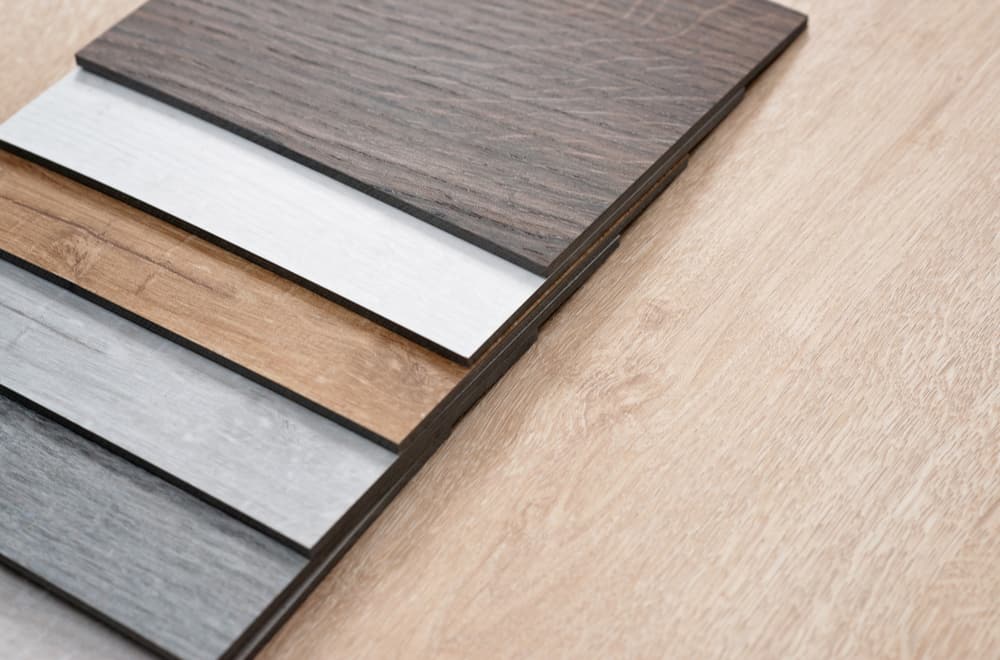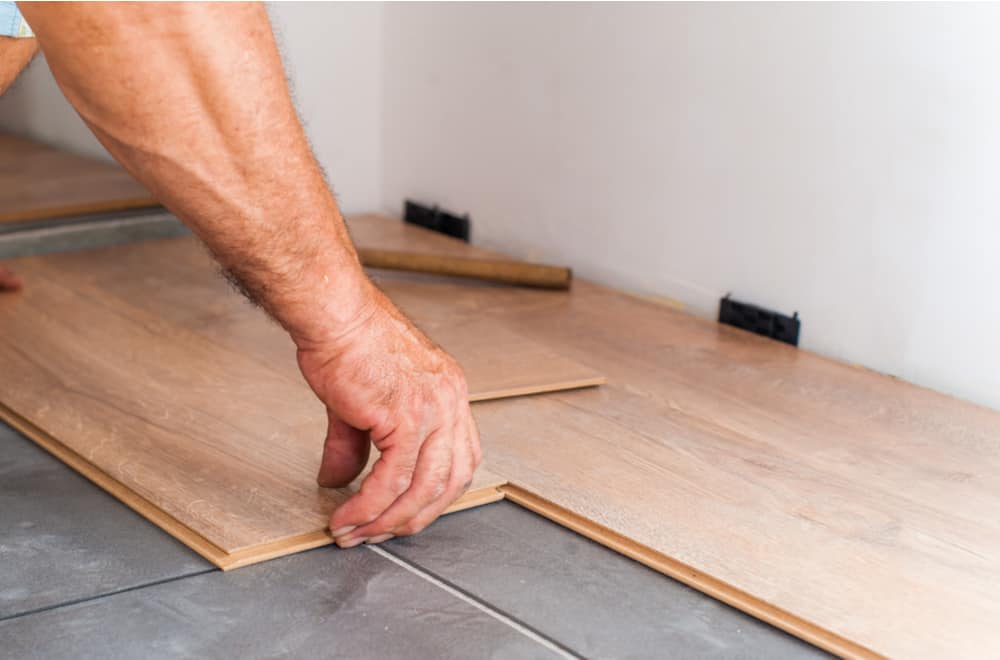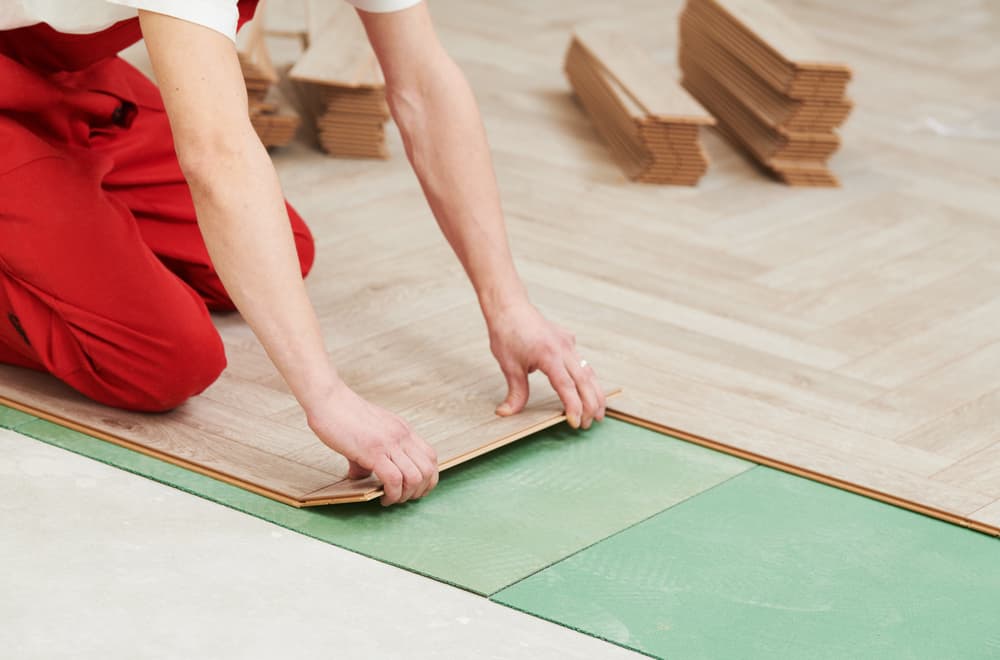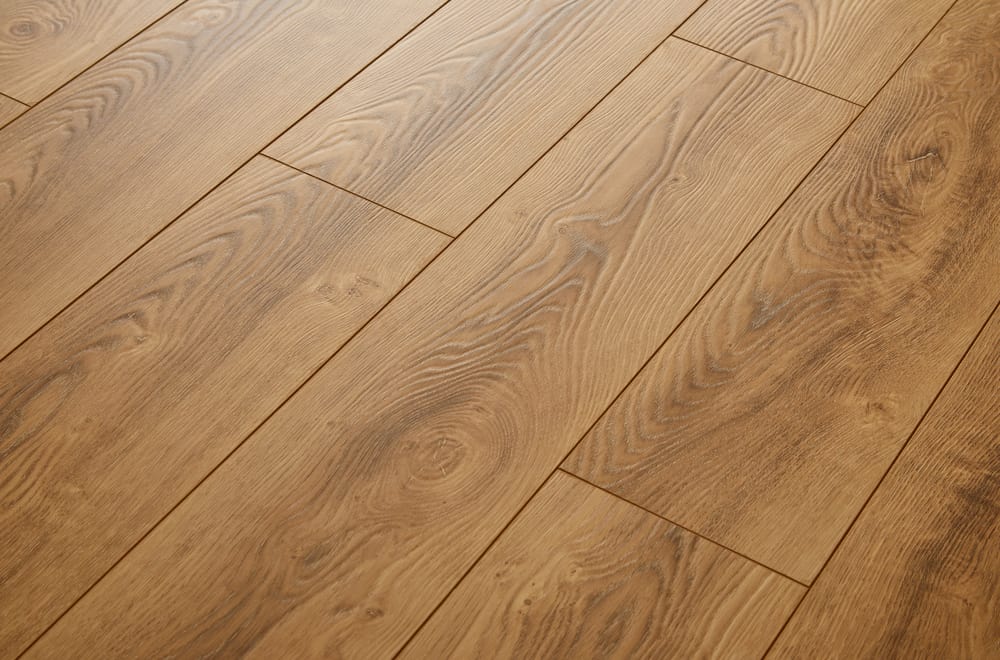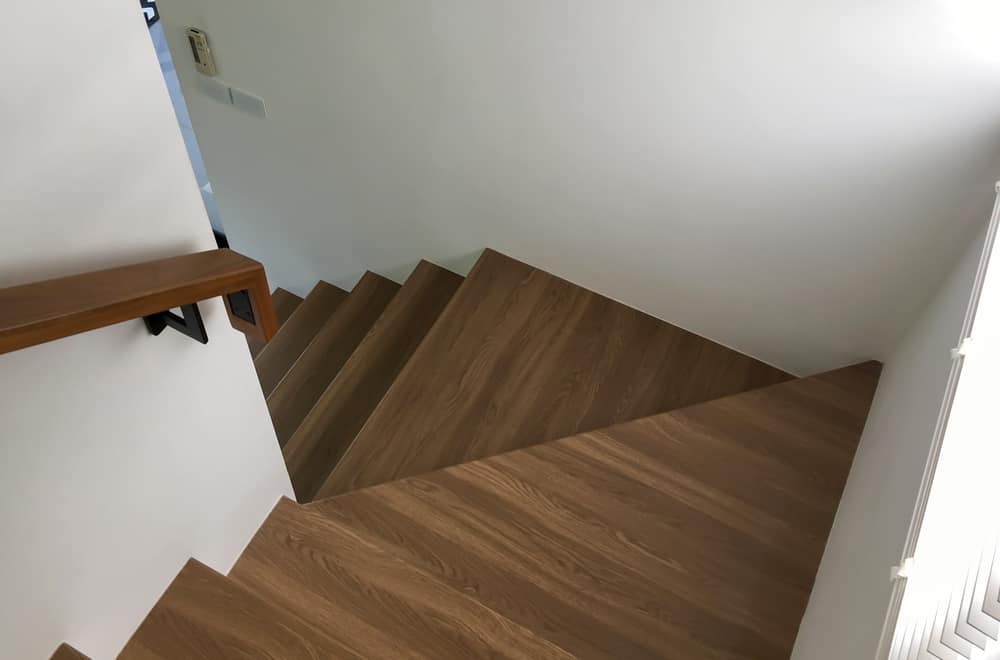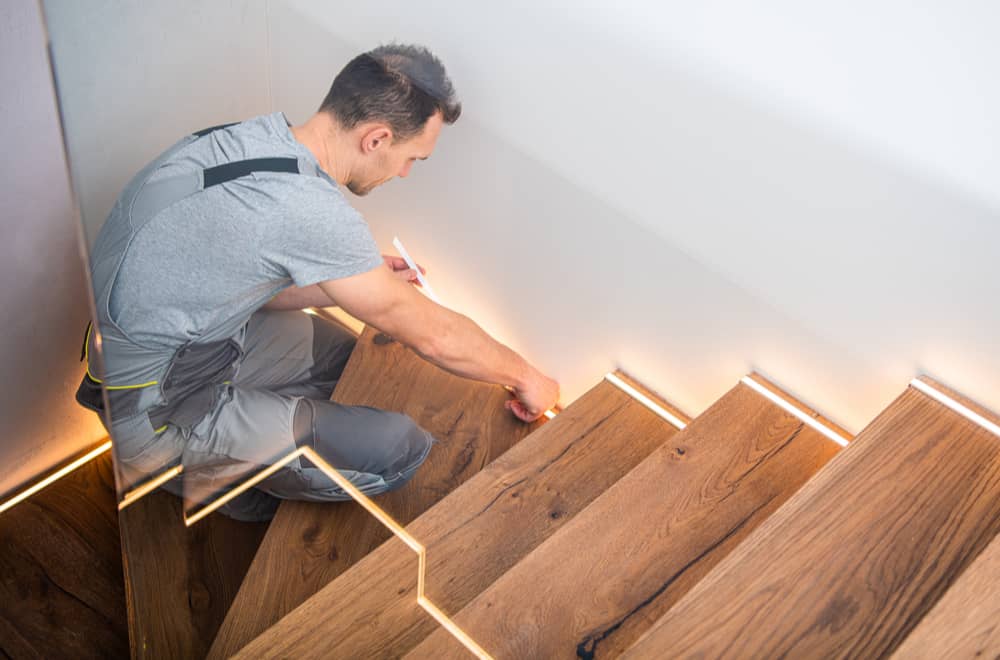You can install any flooring material you choose on your staircase. However, each material option has a unique set of advantages and disadvantages that you should consider. Stairs are high-traffic zones, so choosing an appropriate flooring type is critical. This article will specifically address several of the pros and cons associated with installing vinyl plank flooring on your stairs.
But, first…
Table of Contents
What is Vinyl Plank Flooring?
Vinyl plank flooring, commonly referred to as LVP (luxury vinyl plank), is an affordable option for you as a homeowner or business space designer. Its popularity continues to grow as well as the various styles and finishes readily available to you.
LVP is a synthetic material made primarily of polyvinyl chloride, a type of plastic. From its earliest discovery, this polymer is now an incredible alternative to hardwood flooring.
Remember, as I continue to discuss the pros and cons of installing vinyl plank flooring on stairs with you, I shall refer to it as LVP. As is the case, this is the most frequently used acronym used in today’s market.
Composition
Although not indestructible, a common feature of LVP that may appeal to you is its durability. More specifically, LVP has a rigid core due to its multi-layered construction. Traditionally, a vinyl plank consists of at least four main layers.
The wear-resistant (also the uppermost) layer helps protect against scratches, stains, and fading. Your vinyl plank also consists of a printed decoration layer, a vinyl core, and a backing layer.
Typically, the wear layer comes in 8 mil, 12 mil, 20 mil, and 40 mil options. The thickness you decide upon depends mainly on whether you plan to install LVP in a residential or commercial setting.
MSI recommends that you opt for a minimum of 12 mils when considering LVP for your home space. However, for commercial settings, consider a wear-layer of at least 28 mils. For reference, 40 mils is equivalent to 1.016 millimeters, according to this unit converter.
Where Can I Lay LVP?
LVP is a practical choice for any space in your home or commercial space. We have already discussed the basic construction of vinyl plank, so if you are wondering what all the hype is about, let me tell you.
LVP will deliver a beautiful aesthetic touch to your space that can last up to 25 years if properly maintained. Let’s take a closer look at several other deciding factors.
Pro’s of Vinyl Plank Flooring
There are several features of LVP that make it so attractive. After we look at these, I will answer your main question, “Can I lay vinyl plank flooring on stairs?”
Affordability
Generally speaking, vinyl plank flooring is a modest choice for most people’s budgets; however, this shall depend on your personal preferences of style and quality.
As with most investments, cheaper alternatives may not fulfill long-term expectations. Therefore, please understand the total cost of your LVP project will vary upon many extras, some necessary and others not so much.
FloorCritics suggest the following extras to consider:
- Vapor barriers.
- Trims (as for transitions or stairs).
- Demolition and disposal costs (of the old floor if applicable).
- Installation tools (if this is a DIY project).
- Labor costs for a professional installation (if preferred).
Keeping this in mind, LVP (without the extras) can cost as low as $2.00-$4.00 per square foot for lower-end vinyl. For a good quality plank, a budget of $4.00-$7.00 per square foot is more realistic. On the other hand, a high-end plank can cost upwards of $12.00-$15.00 per square foot.
DIY-friendly Installation
Suppose you are the handyman or woman type like me who enjoys completing a home project by yourself. If that is the case, be pleased to know that with some preliminary research (of products and installation methodology), online tutorials, and devotion, you will become the master installer of your dream floors.
YouTube has become an excellent platform for users to watch, like, and share videos of just about any subject imaginable for you and me and most of the contemporary world. For example, a quick search on “How to install LVP on stairs” will result in thousands of instructional videos that you can easily filter by relevance and rating.
Wear-Resistant
This feature is an all-time favorite of LVP owners. Remember to select an appropriate quality vinyl plank to fit your space usage. Pay particular attention to the wear layer’s thickness (measured in mils), as this is your flooring’s primary defense against scratches, stains, and other deficiencies.
Additionally, a proper care and maintenance program will assure you enjoy the total life expectancy of the LVP of your choosing.
Easy Care and Maintenance Routine
As a homeowner, you ought to adhere to a regular care regimen to protect your investment. You should first consult the care and maintenance recommendations of the LVP manufacturer you select as your flooring partner or with any product for that matter.
Here is a quick list of best practices to follow so that your vinyl plank floors will keep their glamour year after year, no matter what life throws on them.
- Sweep on a regular (daily) basis when possible.
- Spot clean accidents or other harsh spills immediately.
- Mop your vinyl plank flooring once a week.
- Don’t use harsh cleaners on your floor.
- Apply a vinyl floor sealant if necessary.
- Please do your best to prevent scuffs and scratches.
- Be sure never to use a steam mop for cleaning vinyl surfaces.
Water-proof
This characteristic makes LVP suitable for any room in your space, including wet areas such as bathrooms, kitchens, laundry rooms, and mudrooms.
Proper installation of your LVP is critical, as moisture of any kind will penetrate anything other than tight joints. The level of ‘waterproofness,’ so to speak, of your LVP, also depends significantly on the specific materials of your plank’s vinyl core.
Comfortable
A high-quality vinyl plank may have a built-in underlayment layer that acts as a cushioning and sound-reduction attribute. However, it might be necessary to install a specially formulated underlayment layer separately.
In both cases, LVP is usually a comfortable surface to walk on barefoot. LVP’s built-in cushioning creates a softer flooring choice for children and the elderly. Additionally, your LVP surface should not get too warm in the summer or too cold in the winter to walk on.
So, is LVP Stair-friendly?
Yes! The key features described above render LVP a pragmatic choice for your stairway’s surface. In addition, LVP will help create a unique look to your space by harmoniously coordinating your stairway to the rest of your flooring, whether LVP or other material.
Before rushing into a decision to lay LVP on your stairway, please take the time to consider some significant disadvantages. Some of these include:
- Careful planning and measurement are critical if you decide to attempt this project on your own.
- Improper research may result in selecting an LVP manufacturer that does not supply the nose piece necessary for stair installation.
- Hard to remove in the case of a damaged plank. (Please note that the industry’s recommendation is to install LVP on stairs via the glue-down method.)
- Appropriate nose pieces, treads, and moldings can be pretty expensive.
- VOCs (volatile organic compounds) are still worth mentioning, although most LVP manufacturers are improving their processes and formulas.
DIY Approved
After considering the pros and cons of vinyl plank flooring on stairs, you may have decided to move forward with your DIY project in mind. You have researched, chosen a reputable manufacturer, but need a few additional pointers before getting started.
Tools
For any project, you know that having the appropriate tools can either make or break the build. Needless to say, if you are like me, then the experience is part of your ultimate satisfaction.
If you have selected LVP as the flooring choice for your stairs, you will need:
- utility knife
- square
- level
- measuring tape
- stair-tread gauge
- vinyl-flooring cutter
- caulk gun (for vinyl glue)
- floor roller (also available for rent at your local equipment store)
Tips & Tricks
Your first attempt at installing LVP on stairs should run as smoothly as possible. Would you mind making your experience memorable by applying the following tips and tricks:
- Be critical and fix all the imperfections on your subfloor, including the risers. LVP is known to be revealing.
- Remove the overlap from any pre-existing stair nosing. Create a perfect right angle between the tread and riser.
- Allow planks, moldings, and pieces to acclimate to the environment for a minimum of 48 hours before installation.
- Dry-fit all LVP pieces before permanent installation.
- Spread vinyl glue to the subfloor (using s-pattern), working your way from top to bottom of the staircase. After a proper flash time for adhesive, begin installing planks from bottom to top.
- Use Tread, Riser, Nosing installation method to complete stairway.
- Lastly, use a 3-section roller, apply constant pressure to secure the bond between your LVP and subfloor.
Step, Step, and Away
Considering the pros and cons listed above, I would recommend LVP as a solid choice for covering the stairs in your home or office space. I assure you that the tips and tricks provided shall make your DIY experience smoother if you choose that route.
Don’t forget to do your research. Invest the time beforehand so that you can enjoy the luxury appeal that LVP is known to deliver for the entire lifespan of the product you select.
Please feel free to comment below with any questions or concerns you may have.
